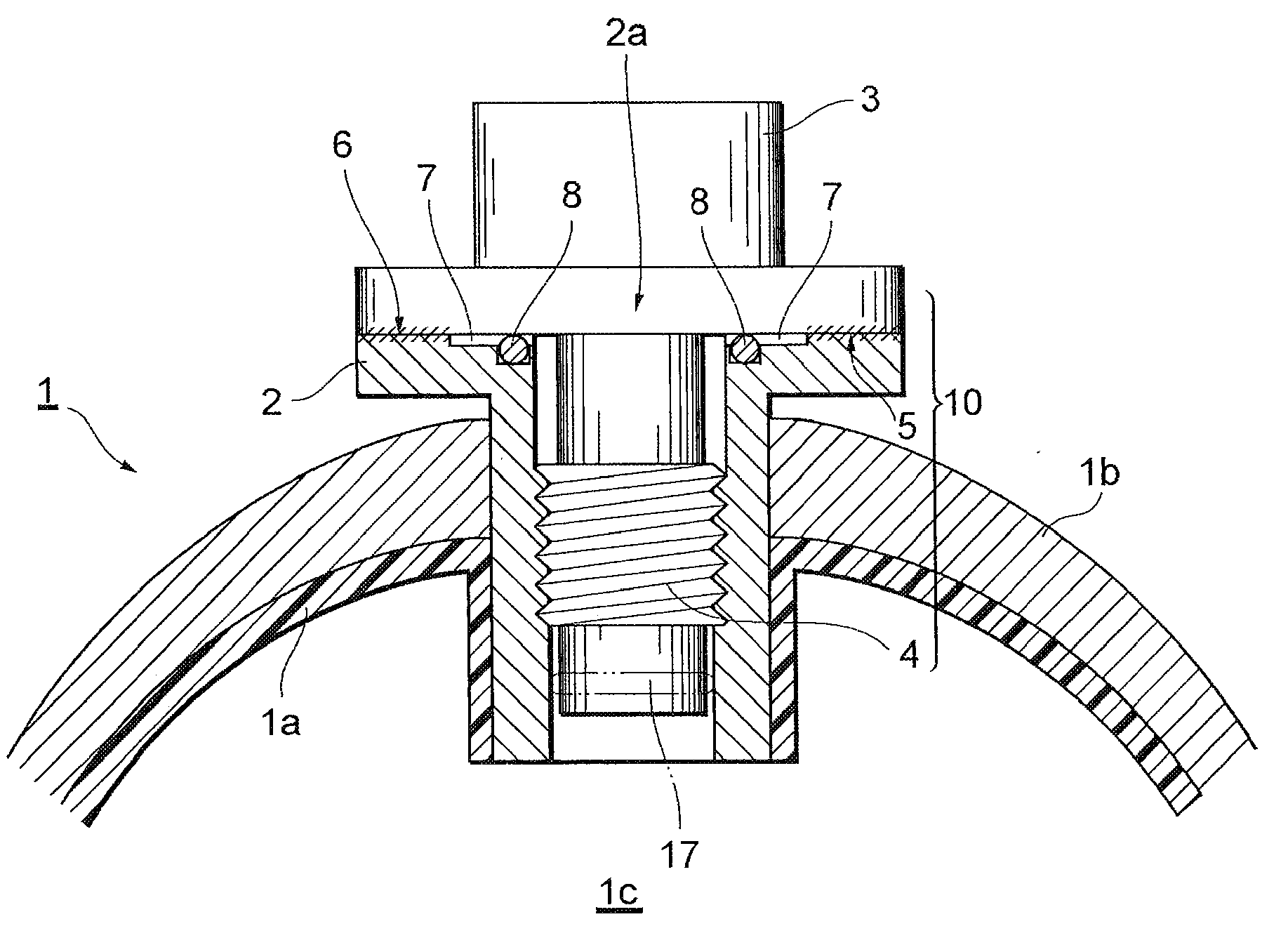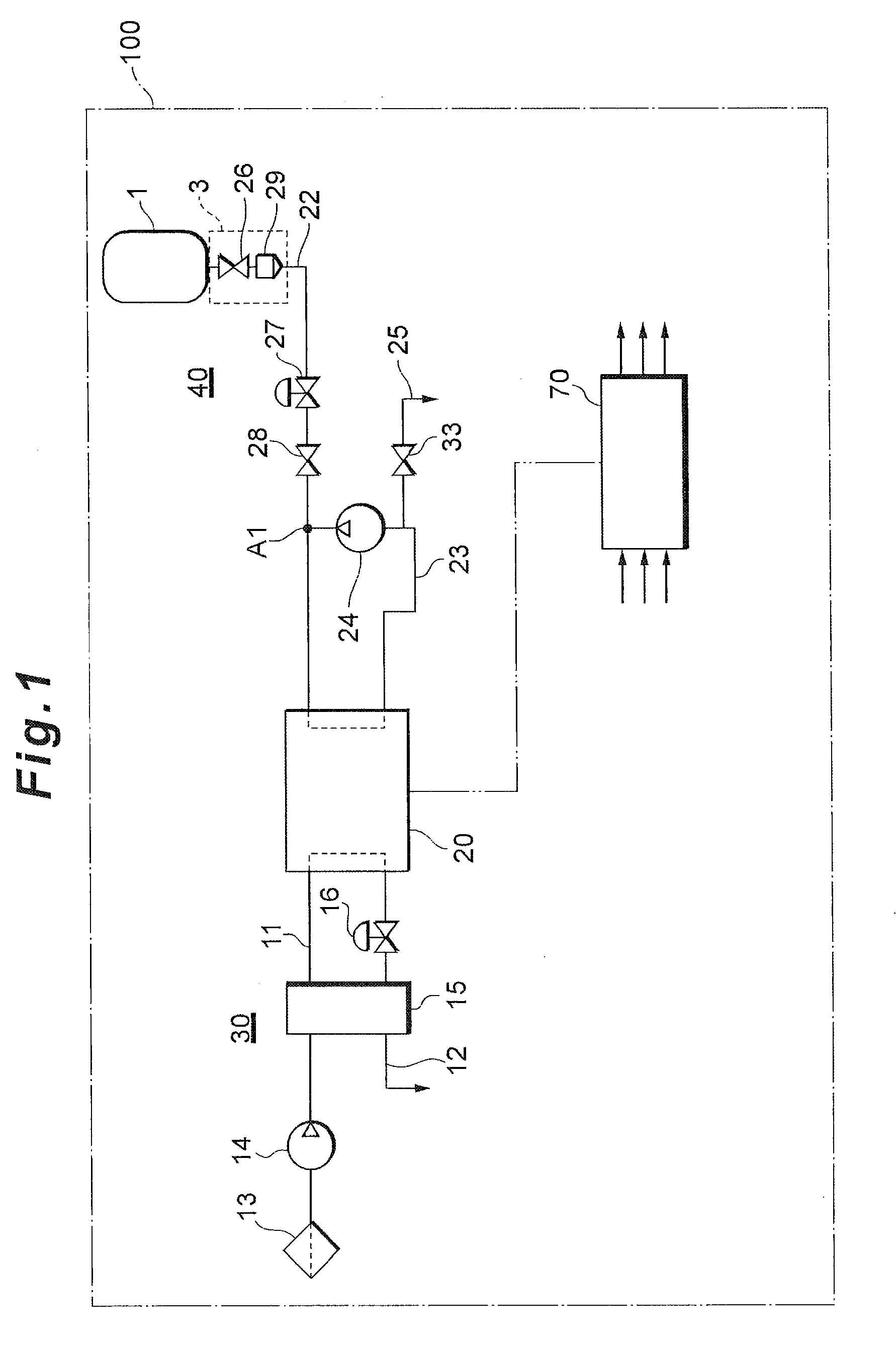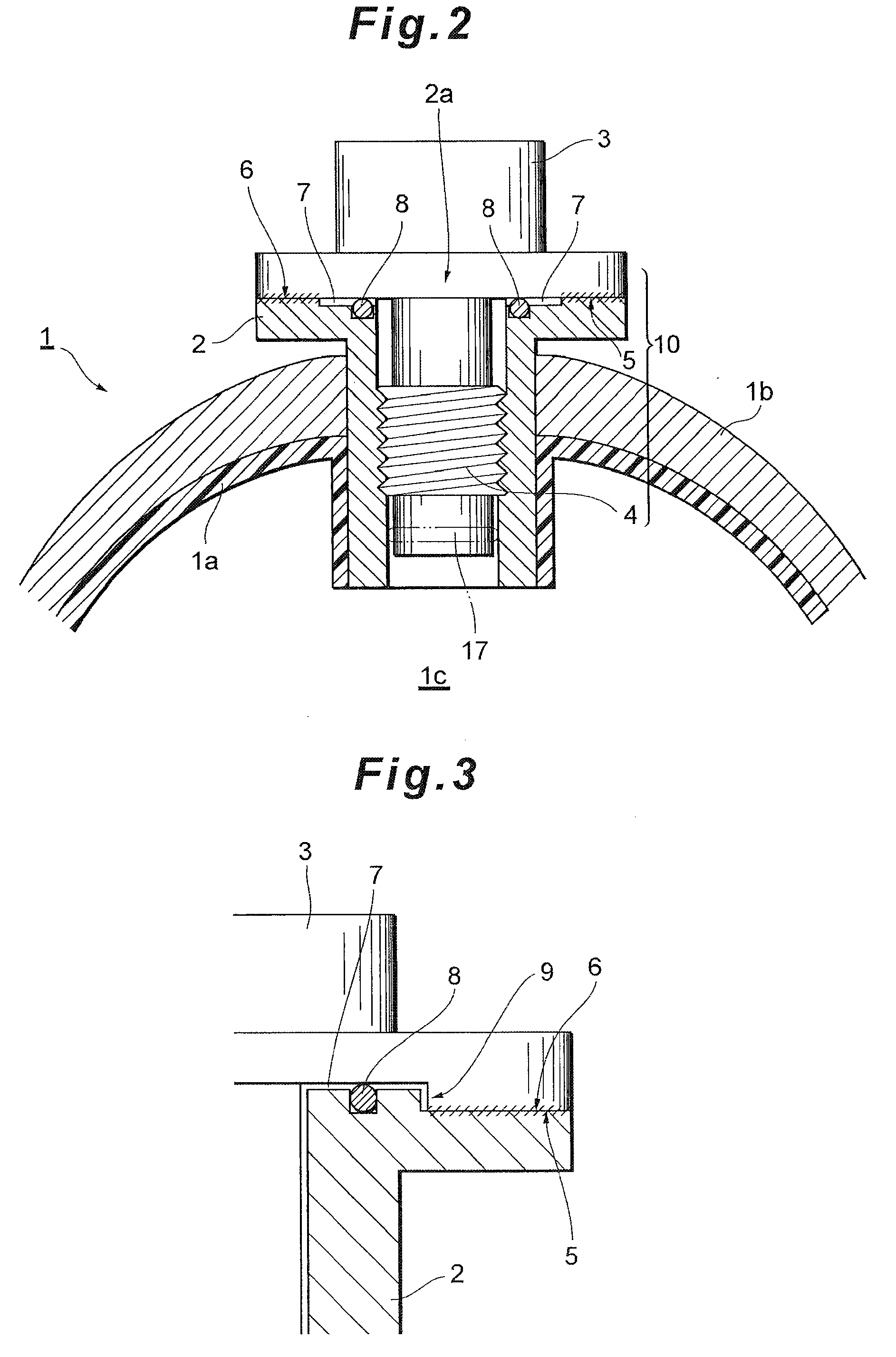Joining structure of tank components
a technology of joining structure and tank components, which is applied in the direction of screw threaded joints, hose connections, container discharging methods, etc., can solve the problems of affecting the operation of the container, and generating foreign matter such as burrs or fine dust,
- Summary
- Abstract
- Description
- Claims
- Application Information
AI Technical Summary
Benefits of technology
Problems solved by technology
Method used
Image
Examples
Embodiment Construction
[0022]A preferable embodiment of the present invention will hereinafter be described with reference to the drawings.
[0023]FIGS. 1 to 4 show the embodiment of a joining structure of tank components according to the present invention. The joining structure (more specifically, a joining structure for joining a tank component 3 to a mouthpiece 2, denoted with reference numeral 10 in FIG. 2) of the tank component 3 according to the present invention joins the tank component (hereinafter referred to also as a valve assembly) 3 such as the valve assembly to be attached to the mouthpiece 2 of a high-pressure tank 1. A case where one embodiment of the joining structure of the valve assembly (the tank component) 3 is applied to a high-pressure hydrogen tank for a fuel cell car will hereinafter be described.
[0024]First, a fuel cell system in the present embodiment will schematically be described (see FIG. 1). This fuel cell system 100 is constituted as a system including a fuel cell 20, an oxi...
PUM
 Login to View More
Login to View More Abstract
Description
Claims
Application Information
 Login to View More
Login to View More - R&D
- Intellectual Property
- Life Sciences
- Materials
- Tech Scout
- Unparalleled Data Quality
- Higher Quality Content
- 60% Fewer Hallucinations
Browse by: Latest US Patents, China's latest patents, Technical Efficacy Thesaurus, Application Domain, Technology Topic, Popular Technical Reports.
© 2025 PatSnap. All rights reserved.Legal|Privacy policy|Modern Slavery Act Transparency Statement|Sitemap|About US| Contact US: help@patsnap.com



